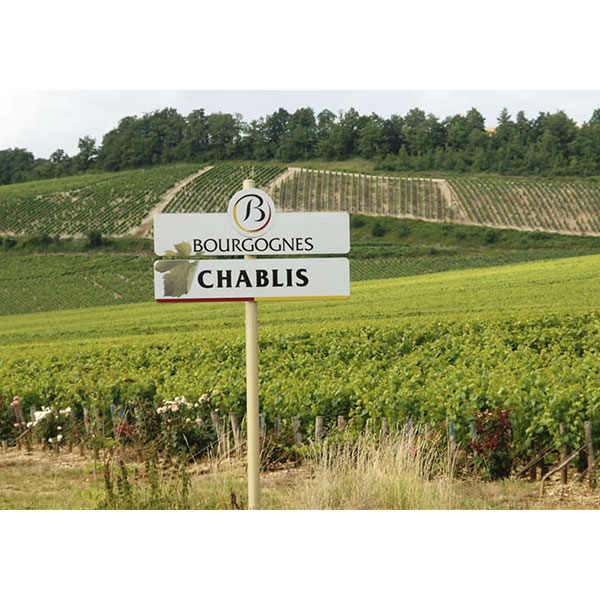Chablis, a French white wine which can date its heritage back to the roman times. Chablis is produced in the valley of the Serein River on the east edge of the Paris basin. It is close to the northernmost limit for ripening grapes, giving it a cool temperate climate and some difficulties due to its exposure to frost. This cooler climate however delivers a Chablis wine with a bright acidity and lean fruit flavours which make up the characteristic of this wine. Laroche
The name Chablis is said to derive from two Celtic words ‘Cab’ which mean house and ‘Leya’ which means near the wood. There are two main soil types in Chablis, Kimmeridgian marl and Portlandian limestone. Kimmeridgian soil is more important and more prevalent in Chablis, it’s where the important Chablis are produced while the Petite Chablis is produced usually in the Portlandian soil.
Chablis is made with 100% Chardonnay, the only grape variety to be grown in the four Chablis Appellation d’Origine Contrôlée (AOC). Chablis producers as opposed to other French chardonnay rarely ages its wine in oak, giving a wine that hasn’t been adulterated with external influences. Chablis is fresh with a bright acidity, characterised by citrus fragrance, purity, crispness, sophistication and minerality.
Chablis wines have a high acidity together with slight sapid notes, making it a great wine to drink with seafood, oysters, shellfish, oven baked white fish and chicken dishes. The depth of a Chablis enhances Swiss cheese, aged goat cheese, Beaufort, Comté, Emmental and vintage Cheddar.
When is the right moment to drink a Chablis, always. But for those of you that like to mature their wines, Petit Chablis can be enjoyed after two years and a Chablis can also be enjoyed in its youth, or be kept for five years or more. A Chablis Premier Cru is a delight between five and 10 years of age. And as for Chablis Grand Cru, this can be enjoyed from 10-12 years after harvest and beyond, depending on the vintage.

